Carnivorous houseplants, instead of sustaining themselves on a diet of water, soil minerals, and sun, get most of their nutrition from proteins, such as insects, and even from some small frogs and mammals. Carnivorous plants love swampy environments filled with moss and moisture and while they may not grow in commercial potting soil or soil containing fertilizers, they are ways to grow them at home with some slight care, so that they can thrive.
In contrast to normal houseplants, fertilizers can kill plants that normally grow in nutrient-poor soil. Using chemical fertilizers can harm your plant because it is not used to living in nutrient-rich soil. In the case of carnivorous plants, they don’t need fertilizer because they get their nutrients from the insects they capture and digest. When an unsuspecting insect lands on a plant, the plant can slowly digest it and extract nutrients.
Carnivorous plants become dormant in winter in cold climates. They can survive through tough winters where some of the plants simply drop off their leaves, while others show changes in foliage.
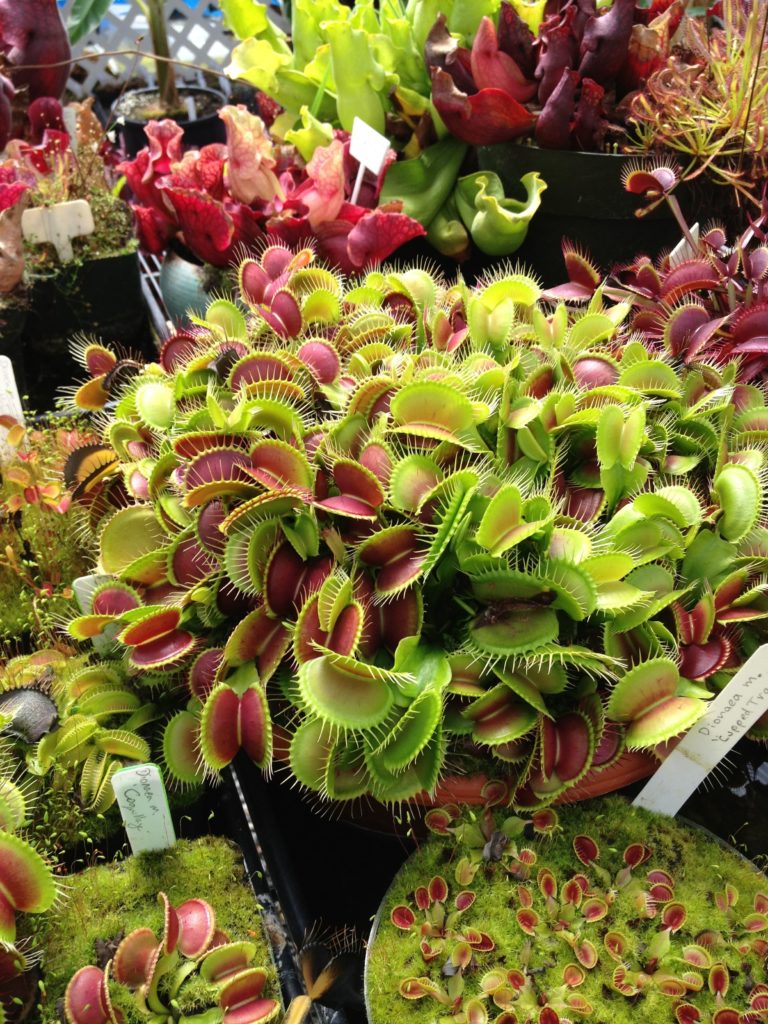
Benefits of growing carnivorous plants?
Species such as butterwort, drosera and pitcher can be grown as houseplants. These beautiful rare varieties can successfully lure and kill pesky house flies, mosquitoes and other insects.
Here’s a list of 7 Best Carnivorous plants that make great indoor easy care carnivorous houseplants.
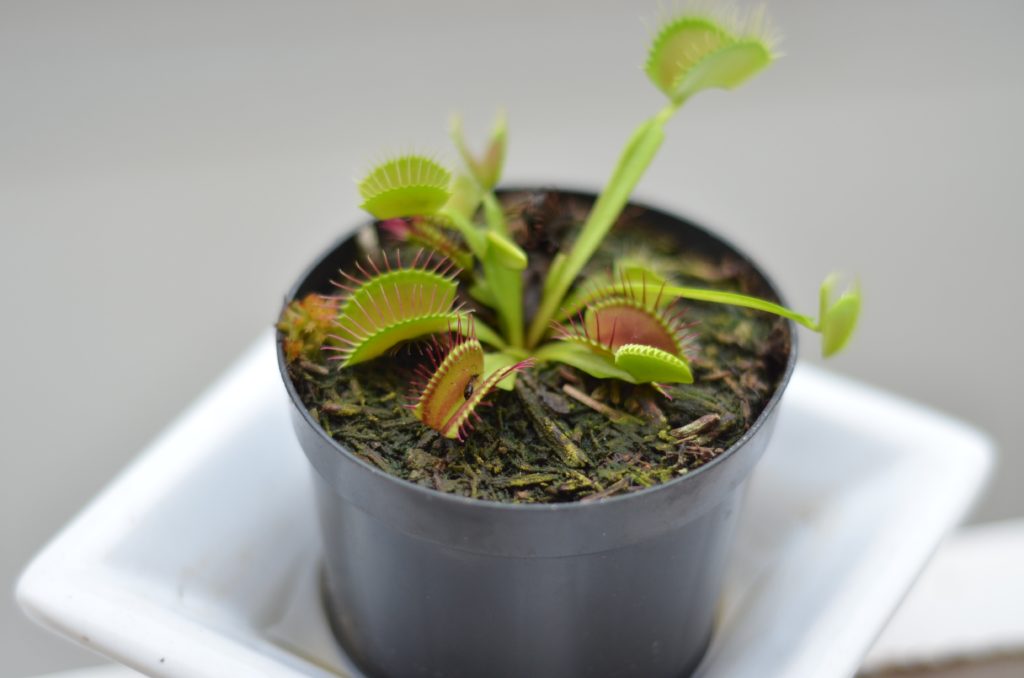
How to Grow Carnivorous Plants
Growing Carnivorous plants doesn’t require a lot of care. They are relatively easy to grow given the right conditions. Since most of these plants grow in marshy environments, humid conditions are preferable to grow them efficiently at home.
Planting
Plastic pots are suitable for planting carnivorous plants due to their ability to retain moisture, with some drainage so that minerals don’t accumulate in the pot.
Carnivorous plants thrive in poor acidic soil, lacking in nutrients. They are best placed in humid areas, although not in the afternoon sun. Morning sun works best.
As the majority of these plants grow in swamps and marshy lands, they dislike dryness. So, keep the soil moist at all times.
The best time of the year to transplant is in spring, or winter in the tropics, after every 2-3 years or when the plant becomes root bound and roots start to poke out of the pot.
Aside from individual pots, a terrarium with good airflow is another ideal way of planting your carnivorous plants. Gravel at the bottom of a pot or terrarium can help with good drainage. Add some peat moss to the plant soil for optimum growth.
If you are growing carnivorous plants from the seed, you can only keep them indoors for the first year only.
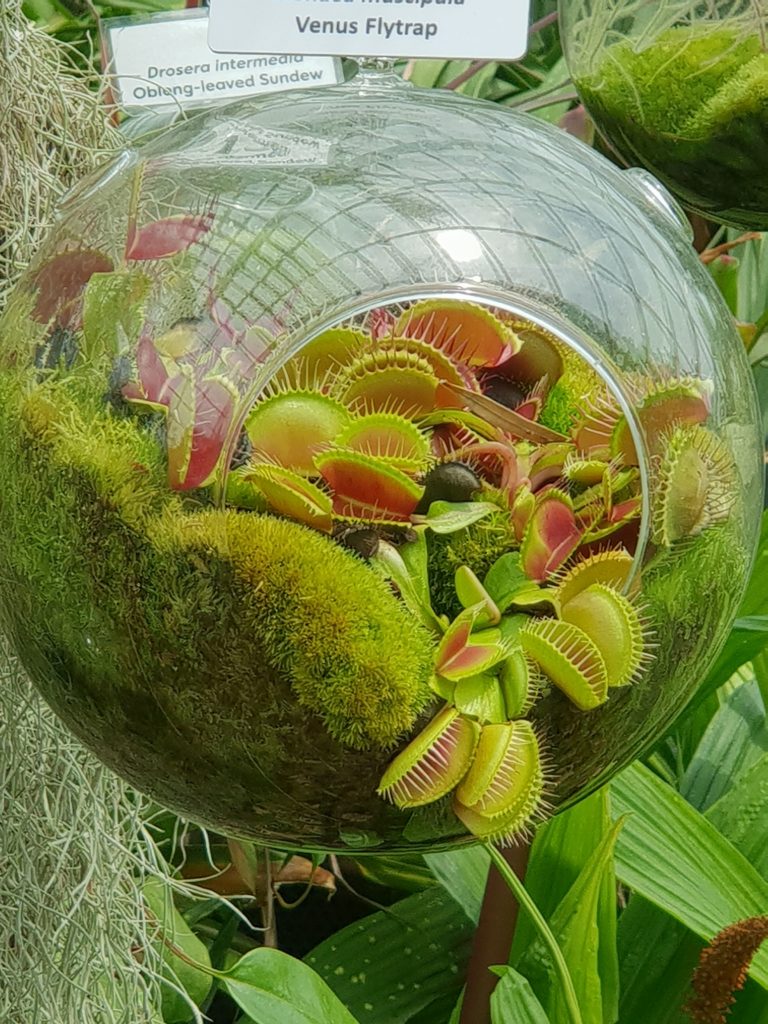
Water
Ordinary or tap water may kill carnivorous plants. It is strongly advised to water them with soft water with no minerals or distilled water. You can usually purchase distilled water for cheap. Otherwise, an easy way to soften the water is to boil it and leave it to cool down which will make the salts precipitate and sediment at the bottom. You can then use the pure water without the salts. Rain water also works well.
To replicate the plants natural habitat, try to keep the pot on a tray, basin or aquarium filled with water, so that the soil remains moist all the time. This is particularly necessary if you are living in a dry tropical climate.
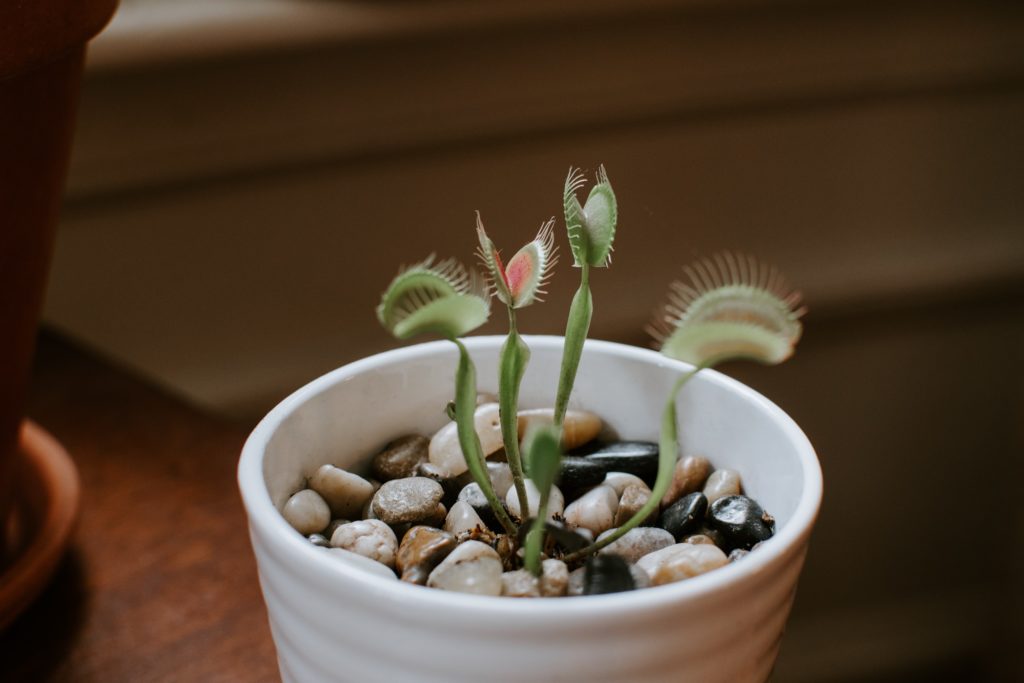
Soil
Ordinary garden soil or potting mix that are used for common garden plants, should never be used for carnivorous plants. This will very likely kill them. It is best to use sandy soil. As a general guide, mix equal amount of sand and peat moss, sand should be washed before using. This mix should have acidity level around 3 – 5.
For pitcher plants, a potting mix of two parts peat moss and one part sand or perlite is perfect.
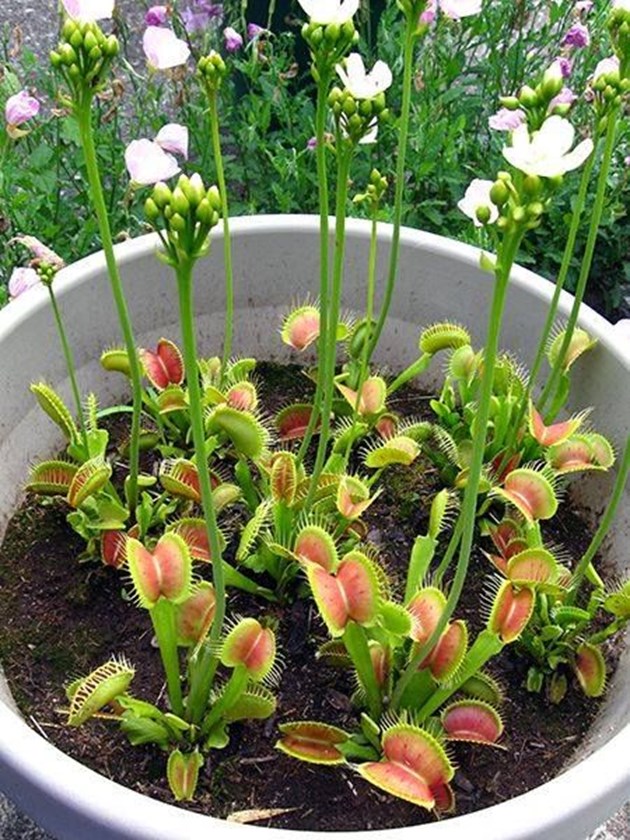
Fertilizer
Due to the way that carnivorous plants acquire nutrients by feeding on insects, fertilizing is really not necessary. In fact, added fertilizer can lead to root burn, resulting in the top parts of the plant and leaves to wither.
What are the best carnivorous plants to grow at home?
Cape sundew (often referred to as “unkillable”) is an easy-to-care plant that is a great starter for beginners, along with the Venus flytrap and the Pitcher plant (Sarracenia).
For more ideas, see this list of 7 Best Carnivorous plants that make great indoor easy care carnivorous houseplants.
This planting guide is given as a general approach and tips for growing carnivorous plants at home. Some carnivorous plants grow in arid conditions, so please check out the info about the specific plant you would like to grow for best results.
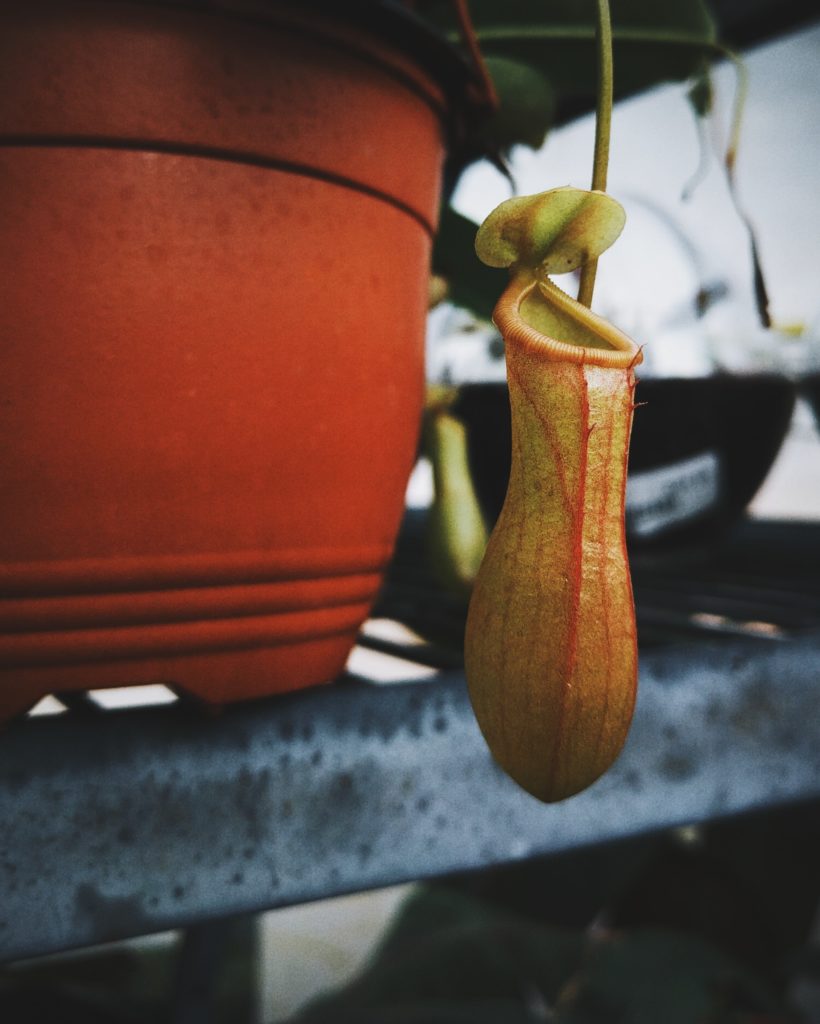
If you are really serious or passionate about growing carnivorous plants, we recommend The Savage Garden, Revised: Cultivating Carnivorous Plants by Peter D’Amato.
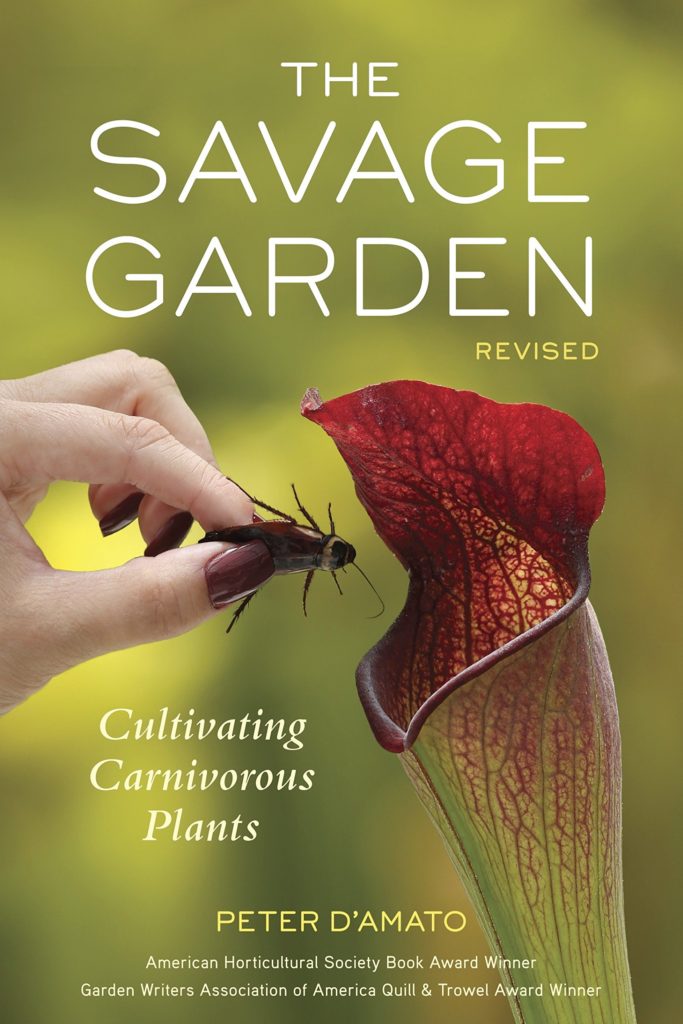
For fifteen years, The Savage Garden has been the number one bestselling bible for those interested in growing carnivorous plants. This new edition is fully revised to include the latest developments and discoveries in the carnivorous plant world, making it the most accurate and up to date book of its kind.
The Savage Garden is the most comprehensive guide to the fascinating world of carnivorous plants, gloriously illustrated with more than 200 color photos. Fully revised with the latest developments in the carnivorous plant world, this new edition includes:
- All the basics—from watering and feeding to modern advances in artificial lighting, soil, and fertilizers.
- Detailed descriptions of hundreds of plants, including many of the incredible new species that have been recently discovered and hybridized.
- Cultivation and propagation information for all the plant families: pitcher plants, Venus flytraps, sundews, rainbow plants, bladderworts, and many other peculiar plants from the demented mind of Mother Nature.
Whether you’re a beginner with your first flytrap or an expert looking for the latest exotic specimen, this classic book has everything you need to grow your very own little garden of horrors.
.
